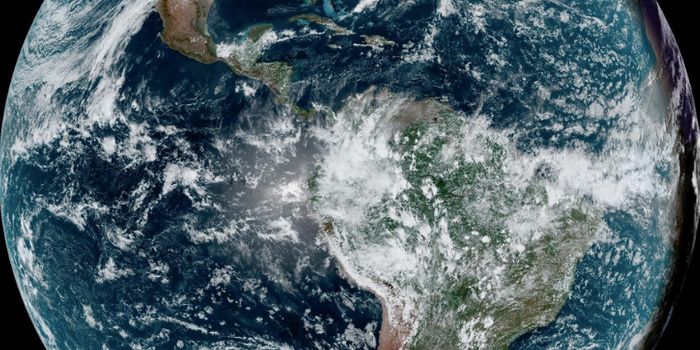We urgently need to reconsider the under-ice landscapes of glaciers
An overlooked aspect of glacial melt could be key to improving sea-level rise models. We often think of glacial melt as just ending up in the ocean, but new research proposes the need to look deeper – almost a whole kilometer deeper, underneath the glaciers themselves. The under-ice landscape, as the rocks and sediments and rivers underneath glaciers are called, has a huge influence on the speed at which glacial melt actually reaches the oceans – and scientists from Stockholm University say we still don’t know much about those spaces.
Of course, part of the challenge is actually reaching the under-ice landscape in the first place, given that it’s hard to measure anything with a kilometer of ice above it. But that absence of information could be distorting our climate models that predict sea-level rise, explains Henning Åkesson, who led the study which focuses on on Petermann Glacier in Greenland. "Choosing the wrong equations for the under-ice landscape can have the same effect on the predicted contribution to sea-level rise as a warming of several degrees."
The Petermann Glacier is of particular interest because as the largest and fastest glacier in northern Greenland, it is one of the only glaciers outside of Antarctica with a remaining ice tongue, a floating glacier extension also called an ice sheet. "Peterman lost 40% of its floating ice tongue over the last decade. It still has a 45-kilometer tongue, but we found that a slightly warmer ocean than today would lead to its break up, and trigger a retreat of the glacier," adds Henning Åkesson.
But just how fast a glacier retreat would translate into glacial melt (and how much melt) is largely dependent on the under-ice landscape of the glacier. Although recent efforts to model the landscape under glaciers and the shape of the seafloor where they drain has led to gained insight about what happens to the ice when glaciers meet the sea, the math behind the models is tricky.
"As we said, choosing the wrong equations for the under-ice landscape can have the same effect on the contribution to sea-level rise as a warming of several degrees," Åkesson says, adding that the IPCC bases its reports on these models. "In fact, predicted sea-level rise for this Greenland glacier can quadruple depending on how we represent friction under the ice. We still don't know which way is the best, but our study illustrates that ice-sheet models still need to progress in this respect, in order to improve our estimates of mass loss from Earth's polar ice sheets."
Sources: JGR Earth Surface, Science Daily








